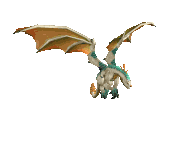Post by QueenFoxy on Mar 1, 2019 12:12:16 GMT -6
Amazing Facts About the Harbor Seal
Harbour seals' whiskers are so sensitive they can sense a fish over 35m away. Their whiskers can also determine the size and shape of a fish using vibrations from the water.

Amazing Facts About the Harbour Seal
Harbor seals “haul out” on land to rest, digest food, give birth, or nurse their young.
Unlike other pinnipeds, harbor seals are predominantly solitary; rarely interacting with others. They do however congregate on shores, and mother-infant bonds are strong until weaning.
Although they are not highly communicative, harbor seals will snort and growl if they feel threatened, as well as performing defensive gestures such as lunging.
They have 40 to 50 whiskers on each side of their snout, with around 1,500 nerves at the base of each whisker – ten times that found in rats or cats. These whiskers simultaneously pick up on any displacements in the water, providing seals with quick information about their surroundings.
Their whiskers are so sensitive they can sense a fish over 35m away. Their whiskers can also determine the size and shape of a fish using vibrations from the water.
Harbor seals can dive to depths of 90 meters and remain underwater holding their breath for up to 28 minutes.
Harbor seals are peaceful animals and are rarely aggressive, except when competing for mates in the breeding season.
Harbor seals are curious yet shy animals. They prefer unpopulated areas and are more likely to haul out on protected beaches. At the first inkling of danger, they will head back into the water and swim away.
Harbor seals have a higher metabolic rate than that of a comparable land mammal. This allows them to generate greater levels of body heat and thus survive in the cold northern waters. Their blubber is also vitally important for allowing them to survive in such cold waters.
Harbour seals like their space, and although groups of several hundred hauled-out seals will assemble on land they keep their distance from each other.
The scientific name for harbor seal loosely means ‘sea-calf’ or ‘sea-dog’. Harbour seals are very distantly related to dogs, both evolving from prehistoric animals which were similar to modern dogs.
85 percent of the UK’s harbor seals are found in Scottish waters. However, populations have declined dramatically – by around 40 percent – in some parts of Scotland over the last five years. Although a number of different factors are thought to be responsible, the unnecessary shooting of seals by fish farmers and fishermen is clearly an important issue. ~
Harbour seals' whiskers are so sensitive they can sense a fish over 35m away. Their whiskers can also determine the size and shape of a fish using vibrations from the water.

Amazing Facts About the Harbour Seal
The UK supports nearly half of the overall European harbor seal population and 5 % of the global population. They are particularly common around Western Scotland and the Northern UK islands.
Harbor seals “haul out” on land to rest, digest food, give birth, or nurse their young.
Unlike other pinnipeds, harbor seals are predominantly solitary; rarely interacting with others. They do however congregate on shores, and mother-infant bonds are strong until weaning.
Although they are not highly communicative, harbor seals will snort and growl if they feel threatened, as well as performing defensive gestures such as lunging.
They have 40 to 50 whiskers on each side of their snout, with around 1,500 nerves at the base of each whisker – ten times that found in rats or cats. These whiskers simultaneously pick up on any displacements in the water, providing seals with quick information about their surroundings.
Their whiskers are so sensitive they can sense a fish over 35m away. Their whiskers can also determine the size and shape of a fish using vibrations from the water.
Harbor seals can dive to depths of 90 meters and remain underwater holding their breath for up to 28 minutes.
Harbor seals are peaceful animals and are rarely aggressive, except when competing for mates in the breeding season.
Harbor seals are curious yet shy animals. They prefer unpopulated areas and are more likely to haul out on protected beaches. At the first inkling of danger, they will head back into the water and swim away.
Harbor seals have a higher metabolic rate than that of a comparable land mammal. This allows them to generate greater levels of body heat and thus survive in the cold northern waters. Their blubber is also vitally important for allowing them to survive in such cold waters.
Harbour seals like their space, and although groups of several hundred hauled-out seals will assemble on land they keep their distance from each other.
The scientific name for harbor seal loosely means ‘sea-calf’ or ‘sea-dog’. Harbour seals are very distantly related to dogs, both evolving from prehistoric animals which were similar to modern dogs.
85 percent of the UK’s harbor seals are found in Scottish waters. However, populations have declined dramatically – by around 40 percent – in some parts of Scotland over the last five years. Although a number of different factors are thought to be responsible, the unnecessary shooting of seals by fish farmers and fishermen is clearly an important issue. ~





 Everyone have a great weekend!!!!
Everyone have a great weekend!!!!